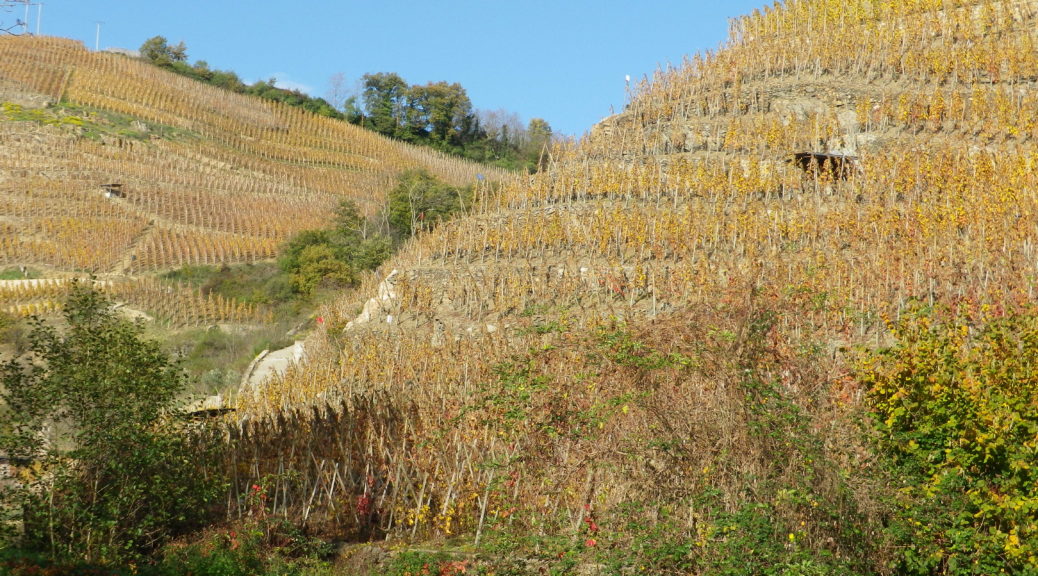When I began this hike, I had little idea how delicious the Appellation Cote Rotie wines could be! I had not really considered the potential for difference between a Cote Blonde or Cote Brune wine, especially given the varietals allowed. Once again, I found that hiking this terrain, this “terroir,” opened my horizons in more ways than one.
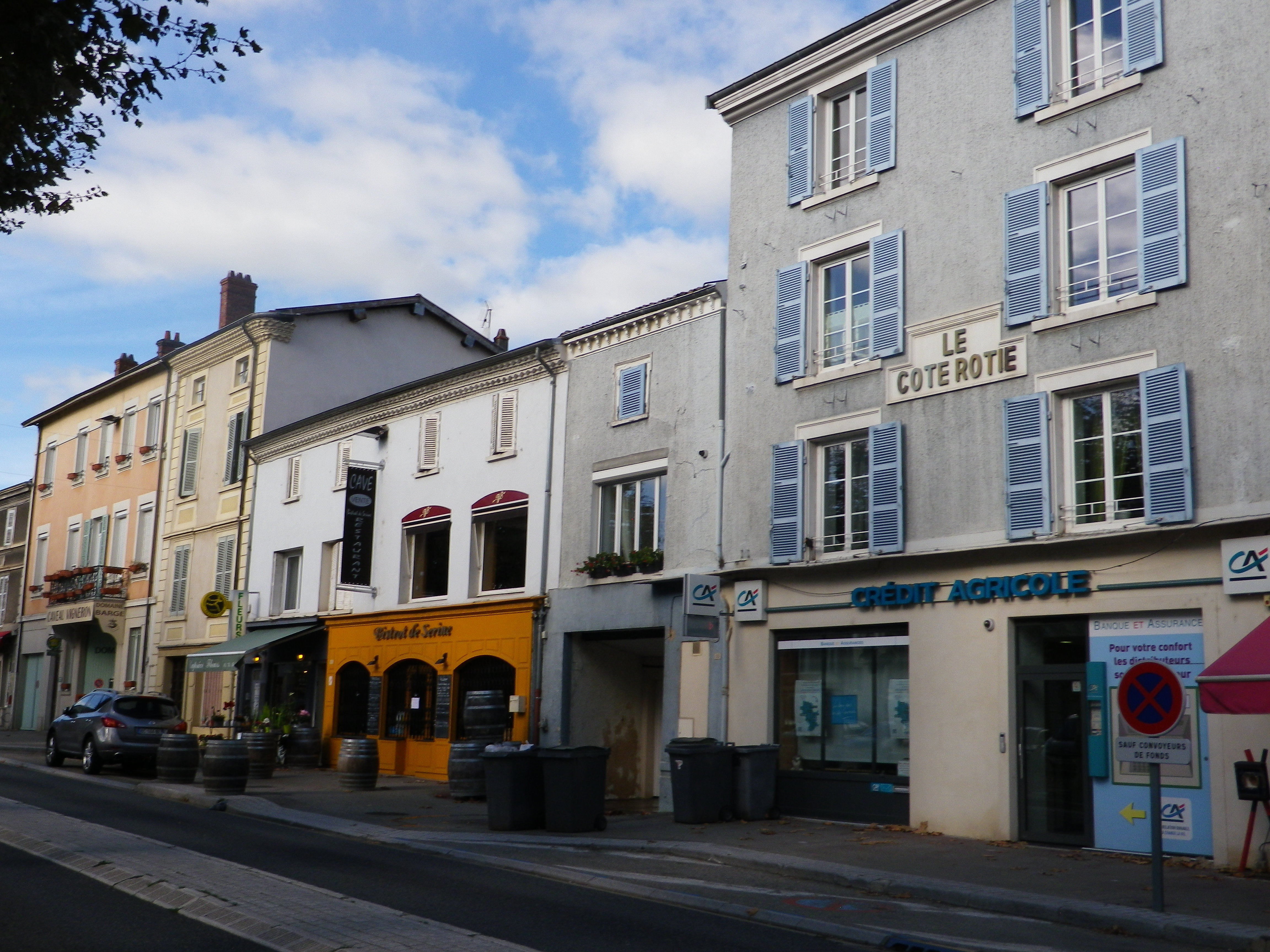
This appellation’s Sentier des Vignes (Trail of the Vines) trail starts in the town of Ampuis, a vibrant, well maintained community. It had friendly shop-keepers, excellent bakeries, and of course fantastic wines. As a hiker, I also appreciated the well-marked parking, and public restrooms on the trail. Finally, the small church in the town’s center has a tall tower, which makes it rather visible, thus helping to know where you are on the trail. From the church, the trail proceeds to the Rhone River, briefly heading upriver along it. Here, away from the bustling main street, the dark, ever-moving waters glide quietly past the town on the way to the Mediterranean. On the way they pass such famous appellations as Hermitage, Cornas and Chateauneuf du Pape, evoking memories of other sumptuous wines and wine regions along the Rhone!
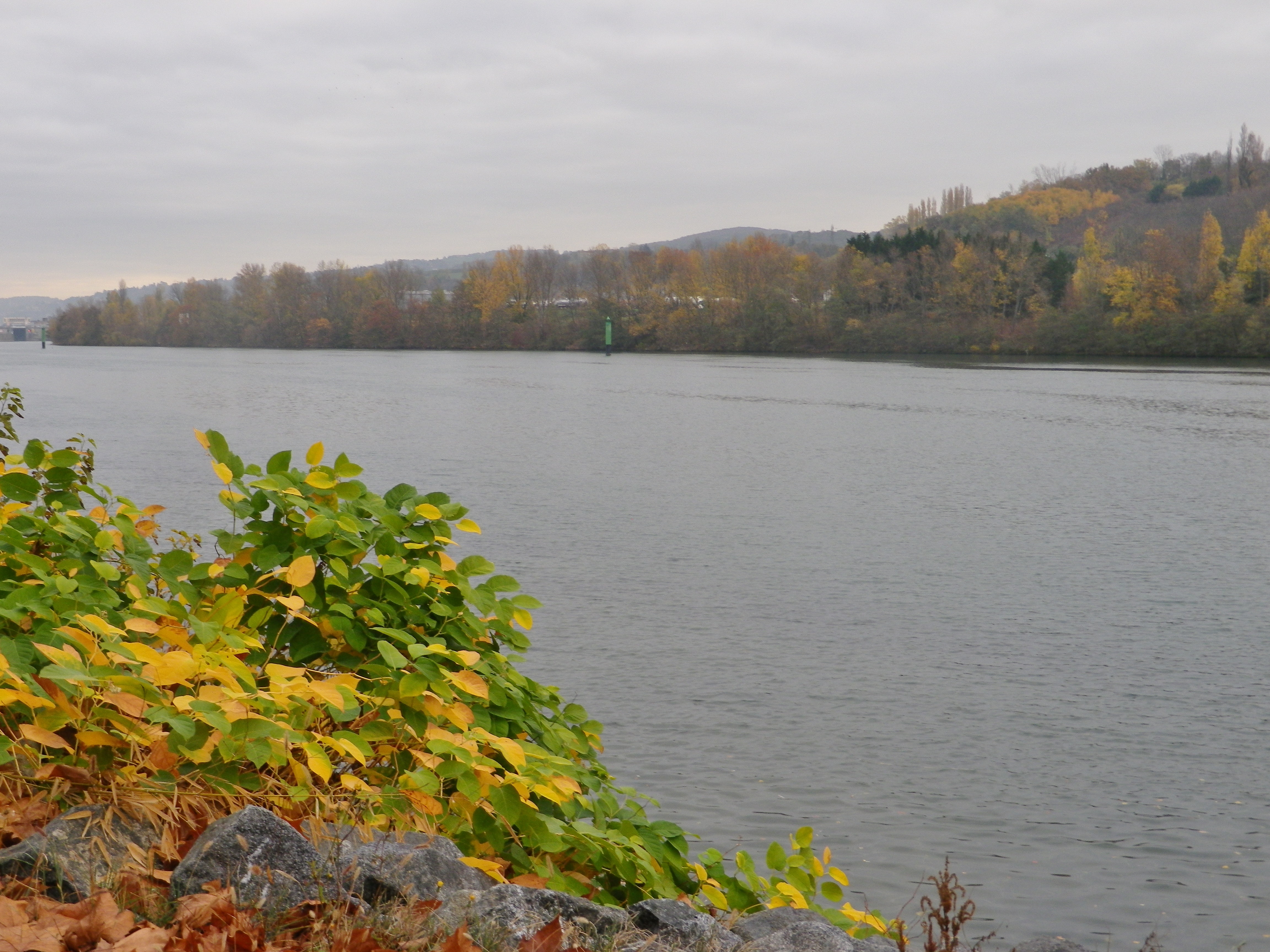
But heading away from the river means heading uphill to the vineyards. These slopes are ideal for planting vines because they are steep. They are also somewhat high. This provides great views of the valley, (unfortunately partly obscured by low clouds and fog during my hike), as well as the Pilat Mountain peak of the eponymous national park surrounding this area. In and beyond the mountains to the west of Ampuis, there are no appellations. Instead, the mountain mass helps shelter this area, providing warmer, more settled weather. The slope I climbed as I took all this in, was the Cote Brune, famous in legend as the slope that the local count provided as a dowry for his brunette daughter.
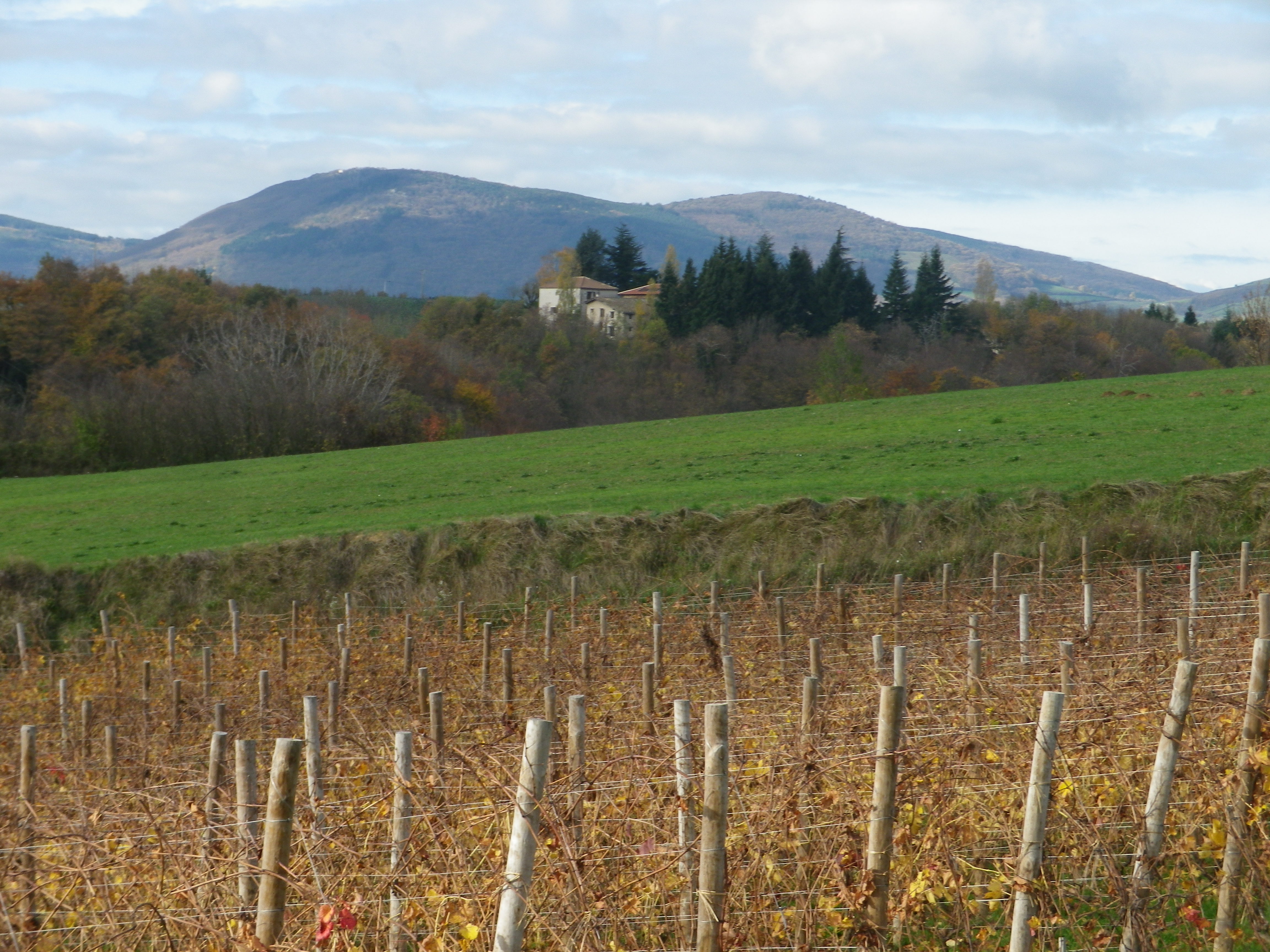
Upon reaching the settlement of Ritolas, the climbing is mostly over. A sylvan interlude followed, as the trail passed through woodlands and over a stream, with a pasture thrown in. Heading toward Cote Blonde, the weather became sunnier. As you may have guessed by now, Cote Blonde is the slope that the local count provided as a dowry for his blond daughter. Undoubtedly like the sisters, the slopes share many traits in common: good exposition to sun and air having similar height and slope, as well as an iron-rich schist soil, overlaid by limestone and granitic components. There are differences though. While I didn’t notice, some claim that the soil is lighter on the Cote Blonde, and Cote Brune does contain more clay in the soil. Some wine enthusiasts find in general that due to slight soil differences, Cote Blonde tends to produce a softer style of wine, and Cote Brune, with more clay, tends to result in bigger and more powerful wines.
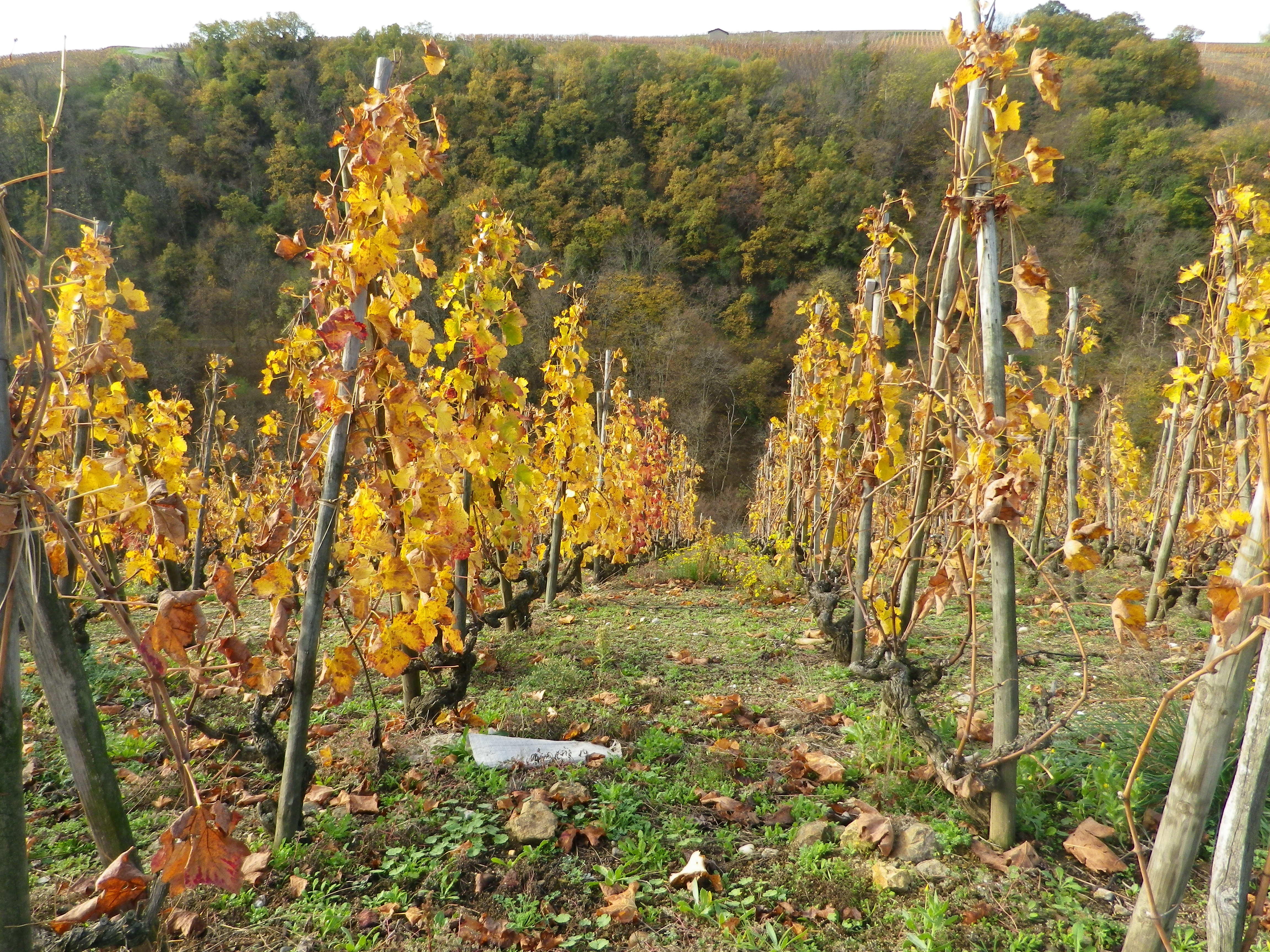
Did I prefer the wine from the Blonde or from the Brunette slope? I couldn’t (and perhaps I shouldn’t) say. Variety is the spice of life, and all the wines were delicious in their own unique ways. I certainly wouldn’t pass on an opportunity to try any of them again. Nor would I pass on an opportunity to hike this trail again, as an excellent introduction to the “sisters” and their wines.
